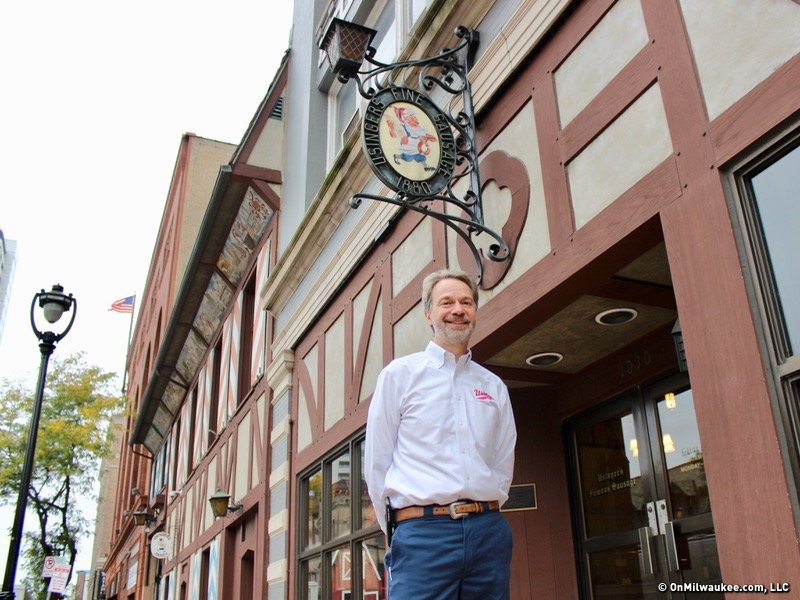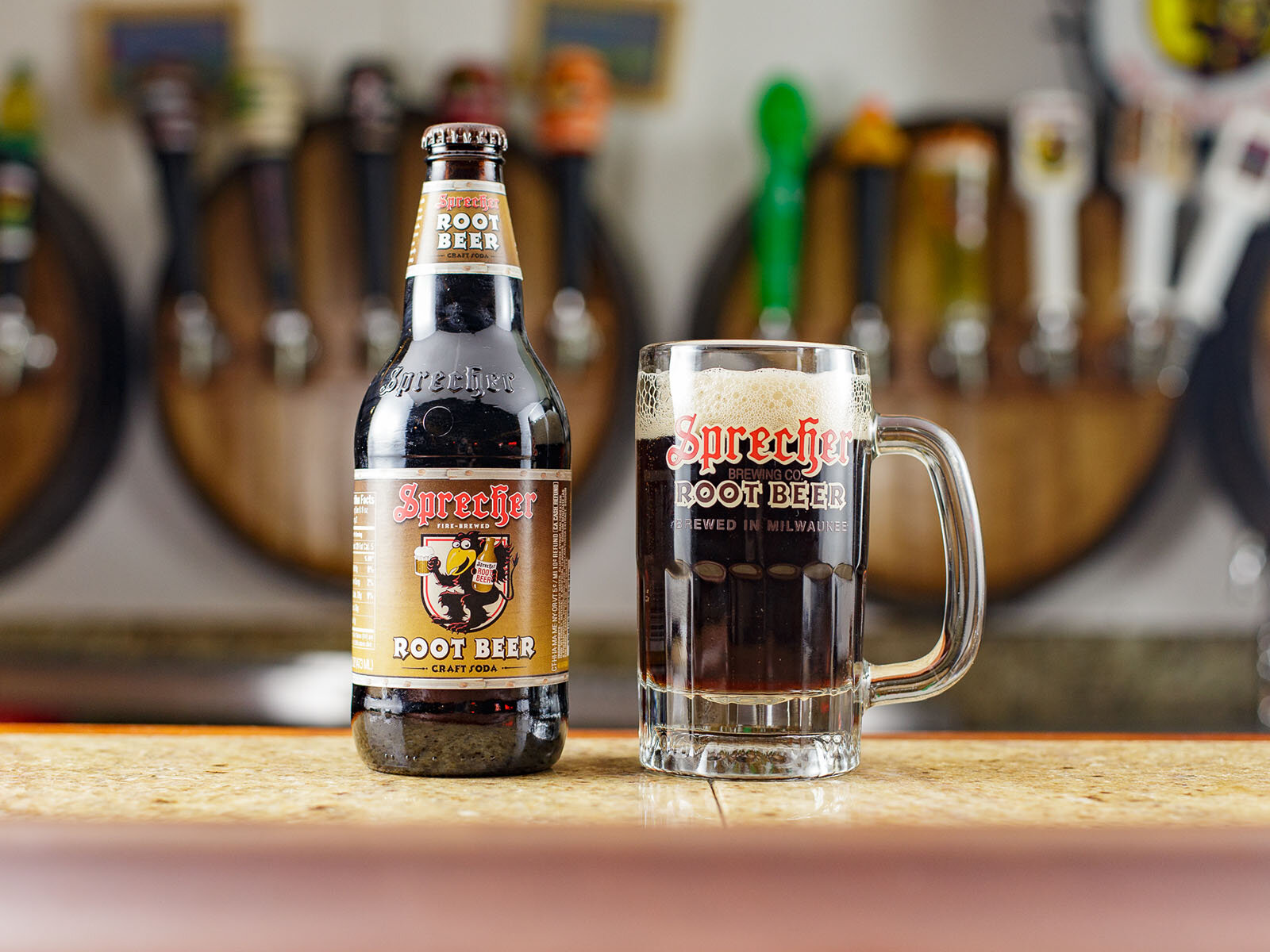This article was originally published in 2017.Flip over a package of Usinger’s braunschweiger and you’ll find a minimal list of ingredients: pork liver, pork, salt, beef, onions, spices.
And that old fashioned, no frills ingredient list is a pride-point for the Milwaukee-based company, which has been producing a variety of traditional sausages and meat products for over 130 years.
Numerous ingredients – from hydrolyzed milk powder, to spice extracts, various binders, fillers and monosodium glutamate – have become standards in the meat industry for adding background flavors, textures and the like.
"MSG fills a gap for many companies in terms of flavor," says Fritz Usinger. "And it’s cheap. It costs maybe 30, 40 cents a pound as opposed to natural spices, which cost more. We’re the gatekeepers to my great-grandfather’s recipes, and those recipes require fresh onions, fresh garlic and natural spices. Our product isn’t made to be cheap or fast. It’s made to be delicious."

In fact, Usinger estimates they bring in at least 700 pounds of fresh onions and probably 200 pounds of garlic into their plant on a weekly basis. Onions and garlic are peeled and ground fresh on a daily basis. Other ingredients like the fresh pistachio nuts for yachtwurst and mortadella are hand-peeled and inspected before being used. And then there’s the attention paid to the quality of the meat.
"You read a label and you see things like milk protein, sodium caseinate, whey powder or any of those things," notes Usinger, "They’re using them to promote emulsion stability. But, your best binding agent in the emulsion process is myosin [meat protein]. It’s salt soluble, and when it’s cooked it creates a web that holds water and fat molecules in suspension. In the end you have to invest in good lean meat to make that happen. If you don’t, you have to supplement that protein source with something else."
The best parts to use, he explains are the big, working muscles of cattle and hogs. "They have less connective tissue and more protein," he says. "If you buy poor quality cuts, it’s cheaper, but you end up with more gelatin formation from the higher concentration connective tissues. The more gelatin you have, the more protein substitute you need to add to bind it together. So, it pays to buy the larger cuts, which we do."
The reason? Giving loyal customers the product they expect.
"I’m a hands on day to day operations guy," Usinger explains. "I’m keenly involved in the day to day manufacturing. And when you’re one of the chefs in the kitchen, you have to be there every day. I’m driven by making the best product possible and really giving our customers the best product possible. It’s those repeat customers who buy our product over and over again that I come to work for. Because they are the reason why we exist."
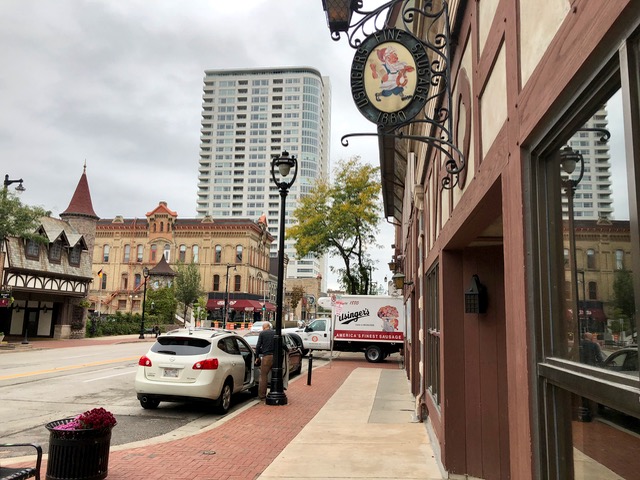
History
Usinger’s history can be traced back to the late 1870s when Fritz’s great grandfather, Frederick Usinger, ventured to the U.S. with nothing more than $400 in cash and a number of sausage recipes he had gleaned from work as an apprentice wurstmacher in Frankfurt.
Once in Milwaukee, Usinger took on work for Mrs. Julia Gaertner, a widow who operated a small butcher shop on 3rd Street. As time wore on, Usinger purchased the business from Gaertner, married her niece Louise, and moved into the living quarters above the store.
They began their own business selling cold cuts to taverns for their free lunch spreads. And, as appreciation grew for their product, business grew. At the time, 3rd Street was the primary shopping district for Germans in the city, and Frederick and Louise were able to fetch premium prices for their excellent sausages. By 1880, Frederick attached his personal moniker to the business, and Usinger’s was officially born.
In the early 1900s, as demand for their product grew, Frederick built the current Usinger’s location, including the retail storefront still used today. Inside, shoppers can still glimpse a similar turn-of-the-century look, complete with marble countertops, tile floor and distinct German murals. Those murals, painted by a fellow German immigrant named George Peters in 1909, depict an elf’s dream about the process of sausage making. And they reinforce elements of German folklore which credits elves as the heavy hitters of industry, taking over production and working throughout the night while their human counterparts sleep.

The dreaming elf, Fritzie, eventually became the company’s registered trademark under the leadership of Frederick Usinger III, who took over leadership of the company from his father, Frederick Usinger Jr., in 1953 and led the company well into the 1990s. During the late 1950s, he assisted in expanding the footprint of the production facility, first upwards (adding multiple floors to the building), and then – after fire destroyed the Metropolitan Block building next door – building an addition to the south, as well as a small parking lot for employees.

Success followed. By 1983, when there was a need, the company opted to build a second facility at 303 E. Florida St. Originally, the facility was used primarily for shipping. However, over the course of 15 years, it was expanded to include 20,000 square feet of additional processing space.
In the 1990s, the business was passed along to his daughter Debra Usinger, who served as a much beloved face for the company for over 20 years.
"It’s always been a family business, so I grew up hearing about work at the dinner table every night," says Debra’s brother and current president, Fritz Usinger. "I was indoctrinated from an early age. By the time I got to high school, I was working there every summer."
And, Fritz says, his destiny connected even more clearly with the sausage business while he attended UW-Madison, where he majored in meat and animal science.
After graduation. Fritz joined the Usinger’s team full-time in 1980. And in 2012, after his sister Debra lost her battle with cancer, he assumed his current leadership role as president of the company.
Old World meets New World
The creation of the new Florida Street facility was a turning point for Usinger’s in terms of growth. It did not, however, change the way the company operated.
"The new space brought efficiencies," says Fritz. "The Third Street plant is spread across six floors, so paring that down to a single floor has improved the ease of processes. But, it’s been important to us that we not change the flavor of the product. People purchase Usinger’s for its quality and flavor. So, when a new piece of equipment is purchased, we’re doing so with an eye to maintaining that quality and flavor."
And not every piece of new equipment is fit for the manufacturing of Usinger’s meats. Take for instance the modern smoker.

"Modern smokehouses don’t produce smoke in the same way as our original brick pit smokehouses do," says Usinger. "You simply can’t create the same flavor in a stainless steel box. You’ll get a smoked flavor, but it’s not the same. And for those with a highly educated palate, you can tell the difference."
The Usinger’s facility on Third Street was equipped with multiple story brick smokehouses, configured like a chimney. Hardwood sawdust produced the smoke, which was filtered up the chimney through metal grate floors. Each floor contained a smokehouse containing a different product.. It was an old school European method which had been used for generations and derived from the days when farmers would harvest a pig and hang cuts of meat in their chimneys to smoke them.

Original smokers.
As a result, it took years to transition the smoking process to the Florida plant, where they eventually built exact replicas of the old smokehouses, ensuring that the flavor of the product would be consistent for years to come.

New smokers.
"There are so many steps to making each of our products," says Usinger. "And if you start to alter them, each little change becomes cumulative. If you keep tweaking, you eventually end up with a different product. So, we’re very careful not to do that."
It’s a standard that means spending more time and energy on each product.
"We’re not trying to be the biggest meat producer in the state or the nation," Usinger underscores. "But we are trying to be the best, to maintain the highest quality and remain true to the recipes that we make."
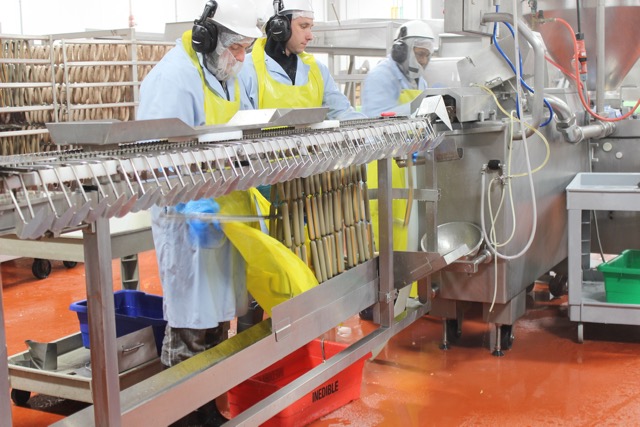
Those recipes number at least 125, Usinger notes, encompassing a variety of old world meats like liver sausage (five varieties), blood sausage (two kinds), head cheese, mortadella and jadgwurst a large diameter sausage made from coarsely ground pork in a matrix of finely chopped pork and beef with garlic and pistachios.
Those products are accompanied by more popular items including summer sausage, snack sticks, bratwurst and grilling sausages as well as bacon and prepared meats including corned beef, pastrami, ham, turkey and chicken breast.
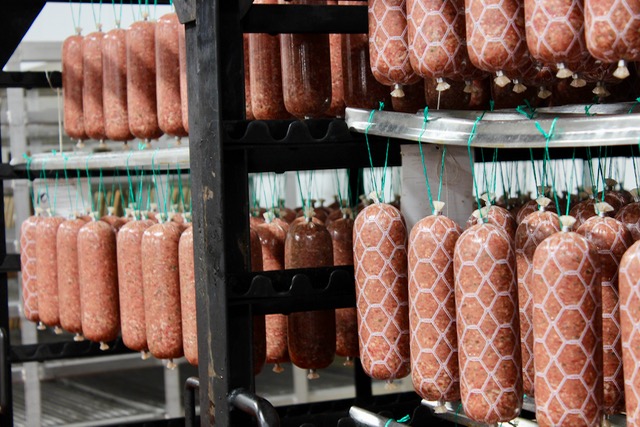
Usinger’s also acts as a co-packer for a variety of small private-label products, a service for which it maintains numerous special plant certifications including Certified Organic and Certified Humane Raised and Handled.
However, despite its size and prevalence of product in the region surrounding Milwaukee, Usinger’s is still considered to be a specialty manufacturer. However, if you look hard enough, you can find Usinger’s products in all parts of the country, Usinger says, most in small specialty shops and delis.
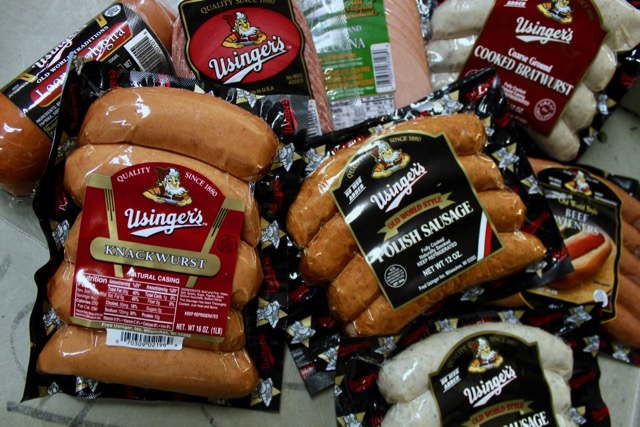
Looking to the future
When you ask Fritz Usinger about the future of Usinger’s, he smiles. "It’s very encouraging … because the country is really getting back to appreciating locally made products and artisan products that are really made the right way."
Looking back, he says the '70s and '80s were somewhat hard on the company.
"When I started in the '80s, there was huge consolidation in the industry. It was all about being bigger and faster. My father told me that there were as many as 19 sausage companies in Milwaukee during the 1950s … names like Badger Sausage, Ziemer’s, Milwaukee Sausage, Weisel’s, Karbach. and Uncle August Sausage Co. But, all of that changed. Smaller companies went out of business or were bought up by big manufacturers. The same happened with corner grocery stores and butcher shops, which lost market share to supermarkets."
Now, he says, there’s a renaissance happening across the nation. There’s artisan cheese, craft brewing and more high quality meat products.
"It’s really cool to see," he says. "There’s an awareness that some of the time-proven practices of any manufacturing might not be the fastest or the most economical, but boy they’re the best.
And when your audience is more aware … when they’re seeking out unusual things and really appreciating the little things that set you apart from your competitors, there’s a lot of validation there. That’s what keeps you going."
Of course, as food trends come and go, Usinger says there’s another thing that will always set Usinger’s apart from its competition: the elves.
"When my great-grandfather came over from Germany, he brought his craft and his recipes. He also brought the traditions and the lore of the elves who made magic in the night while the humans were sleeping. And there’s magic there," he says. "The elves are the talent behind our operation. Big companies have terminology like ‘associate’ and ‘team mate.’ We have elves."
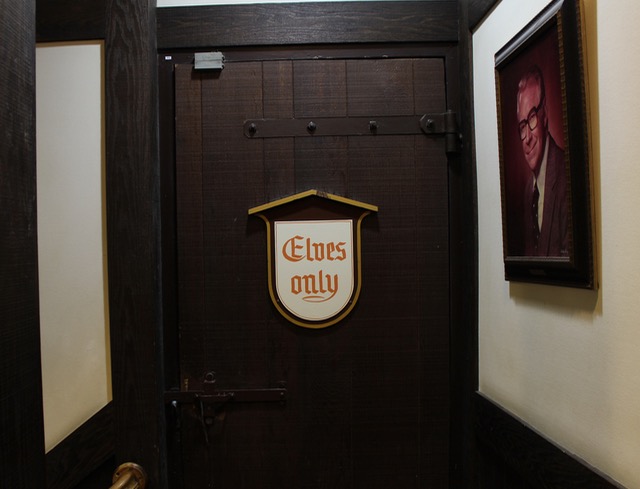
As a passionate champion of the local dining scene, Lori has reimagined the restaurant critic's role into that of a trusted dining concierge, guiding food lovers to delightful culinary discoveries and memorable experiences.
Lori is an avid cook whose accrual of condiments and spices is rivaled only by her cookbook collection. Her passion for the culinary industry was birthed while balancing A&W root beer mugs as a teenage carhop, fed by insatiable curiosity and fueled by the people whose stories entwine with every dish. Lori is the author of two books: the "Wisconsin Field to Fork" cookbook and "Milwaukee Food". Her work has garnered journalism awards from entities including the Milwaukee Press Club. In 2024, Lori was honored with a "Top 20 Women in Hospitality to Watch" award by the Wisconsin Restaurant Association.
When she’s not eating, photographing food, writing or planning for TV and radio spots, you’ll find Lori seeking out adventures with her husband Paul, traveling, cooking, reading, learning, snuggling with her cats and looking for ways to make a difference.

